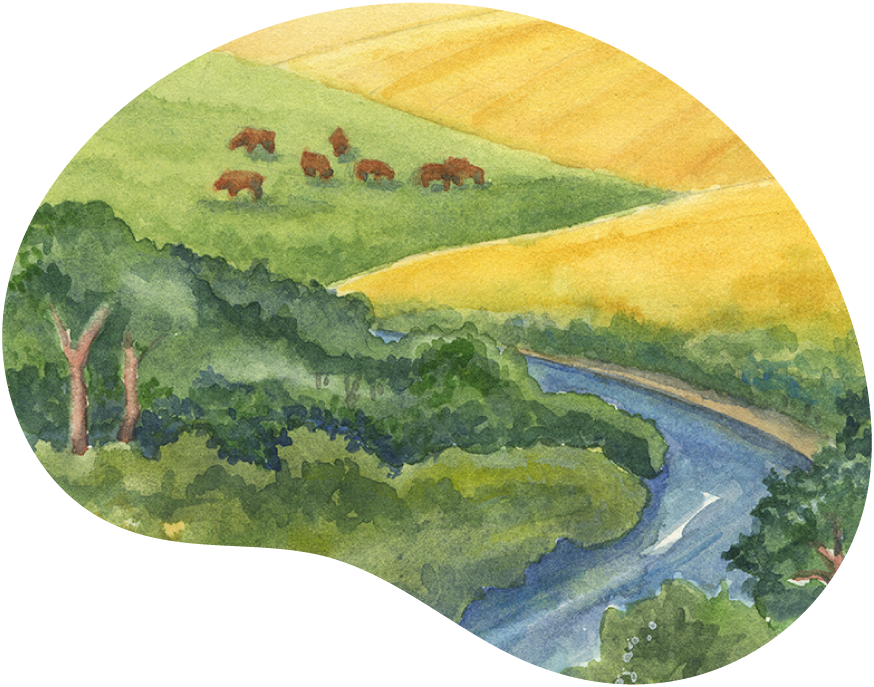
Cows and Fish Brochure
Our focus is on increasing awareness and understanding about how riparian areas work.

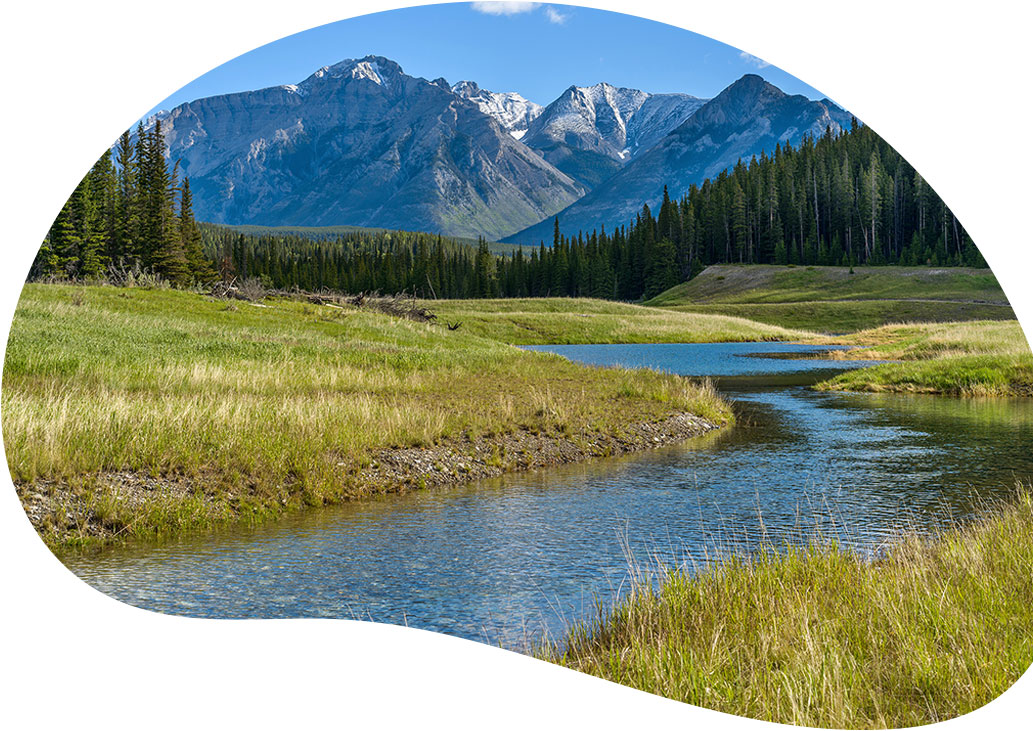

Our focus is on increasing awareness and understanding about how riparian areas work.
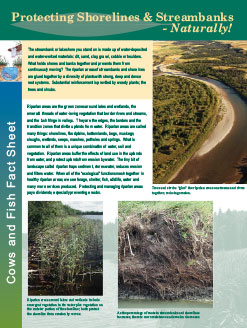
In the tension between land and water, water always wins. Healthy, well vegetated riparian areas slow the rate of erosion and balance erosion in one spot with bank or shoreline increases through deposition elsewhere. It is extremely difficult to solve erosion problems overnight but once the threat of erosion becomes obvious we tend to want a quick fix. Regaining streambank and shoreline stability may require the temporary use of erosion control structures, especially where insufficient riparian vegetation exists. Solutions may also require a watershed view to see all of the things that contribute to instability.
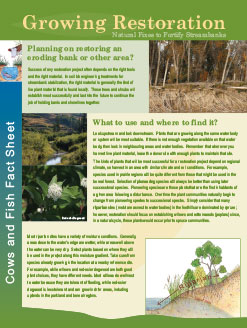
For streambanks and shorelines that are experiencing accelerated erosion, returning those banks to natural vegetation is generally the best approach. This fact sheet introduces readers to the concept of soil bioengineering, using live woody vegetation that will ‘sprout and grow’. Once the cause of the vegetation loss has been addressed, these techniques may be used to restore eroding banks, knitting banks together and reducing further loss.
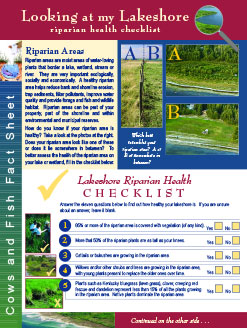
A simple riparian health checklist that quickly identifies how healthy your lakeshore or wetland is. Can be used as a first step when looking at riparian health, prior to a more in-depth riparian health assessment.
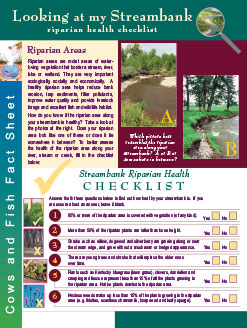
A simple riparian health checklist that quickly identifies how healthy the riparian area along your river, creek or stream is. Can be used as a first step when looking at riparian health, prior to a more in-depth riparian health assessment.
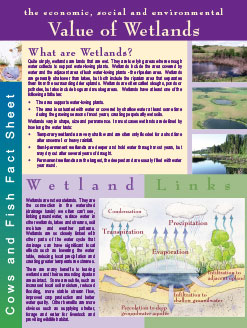
Find out how wetlands can provide more local precipitation, reduce the damaging affects of floods, improve water quality and recharge groundwater supplies in this information packed 4-page fact sheet. After reading this you’ll realize that wetlands aren’t just for ducks and frogs.

How do riparian areas improve water quality? What are the benefits of improved water quality? How can you promote healthy riparian areas? A brief, but useful fact sheet to address these questions.
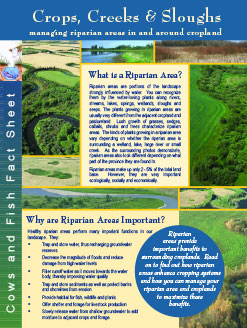
This 4-page fact sheet explains why healthy lakes and wetlands are important. (for more information on lakes and shorelines see Caring For Shoreline Properties, produced by the Alberta Conservation Association)
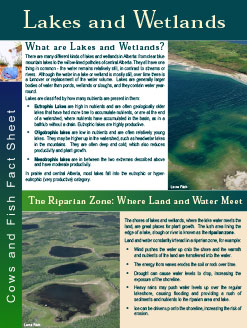
This 4-page fact sheet explains why healthy lakes and wetlands are important. (for more information on lakes and shorelines see Caring For Shoreline Properties, produced by the Alberta Conservation Association)

This 4-page fact sheet includes: What is biodiversity and why is it important? How do riparian areas fit into biodiversity? How do our actions influence biodiversity?

” An Overview of Beaver Management for Agricultural Producers – Decision Matrix Tool” NEW!
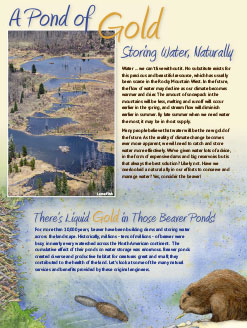
Many people believe that water will be the new gold of the future. As the reality of climate change becomes ever more apparent, we will need to catch and store water more effectively. We’ve given water lots of advice, in the form of expensive dams and big reservoirs but is that always the best solution? Likely not. Have we overlooked a natural ally in our efforts to conserve and manage water? Yes, consider the beaver!

